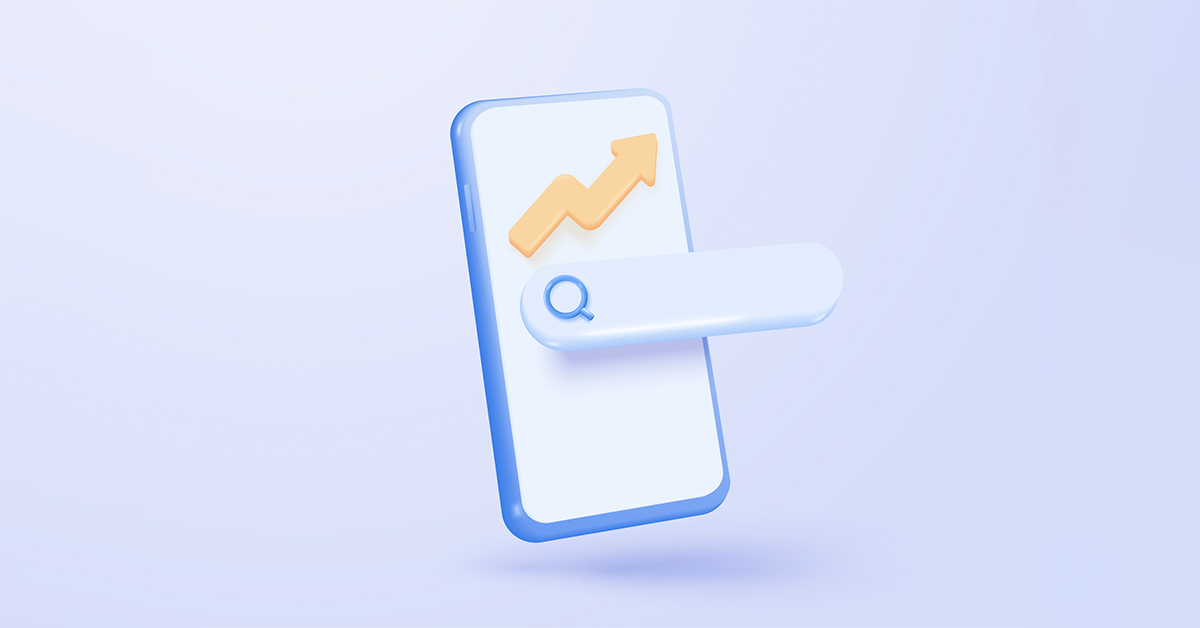Keywords are the language of the internet. Seemingly simple strings of words, they’re the bridge between users and the information they seek. In SEO, everyone knows that optimizing for keywords are important, yet search intent for these keywords is often overlooked.
However, as search engines become more sophisticated, understanding search intent is a critical piece of the puzzle, the core of the user experience.
Understanding search intent will help you significantly improve your bounce rates, website traffic, and ultimately page rank, as you’re able to give your users and customers exact what they they want every time they search for your content.
This guide will delve into the world of search intent and why aligning your content with it is essential for your online success.
- What is search intent?
- The 4 types of search intent
- Why search intent is important
- How to target search intent
What is search intent? (in a nutshell)
Search intent is the “why” behind a search query. It’s why someone is typing those words into Google (or any other search engine, for that matter).
It’s the goal they hope to achieve by searching.
Are they looking to learn something new? Trying to find a specific website? Ready to make a purchase? Or maybe they’re still in the research phase?
For example, if you’re looking online for “backpacks for camping trips”, are you seeing what backpacks are out there? Are you looking for brands? Do you feel ready to buy right now and want a list of products?
Are you unsure of what the differences are between day-to-day and camping backpacks, and you’re looking to understand the difference?
It’s in this way that search intent is like getting a sneak peek into your potential customers’ minds. It’s about knowing what they’re thinking, what they’re looking for, and what they’re hoping to find.
You’re then creating content to fit that search intent, thus giving online searchers what they’re looking for. You already know what it’s like when Google shows a result that doesn’t give you what you want. You click off faster than you clicked on it, and people will do that to you if you don’t get it right.
Why is search intent important?
Because when you understand search intent, you can create content that perfectly matches what people are searching for. That means higher rankings, more organic traffic, and ultimately, more sales for your business.
The 4 types of search intent (and why they matter)
There are four main types of search intent you need to know. The flavours of search intent:
- Informational Intent: This is when someone is on a quest for knowledge. They’re typing in questions like “how to make the perfect cup of coffee” or “what are the benefits of meditation.” Their goal is to learn something new, so they’re looking for blog posts, articles, guides, or tutorials.
- Navigational intent: This is when someone knows exactly where they want to go. They’re typing in brand names (“Nike”) or specific websites (“YouTube”) because they want to get there directly.
- Transactional intent: This is when someone is ready to buy. They’re looking for product pages, online stores, or deal sites because they’re typing in things like “buy hiking boots” or “best noise-cancelling headphones.”
- Commercial investigation: This one’s a bit of a hybrid. It’s when someone is doing research before they buy. They might be comparing different products (“iPhone vs. Samsung”) or looking for reviews (“best Italian restaurants near me”).
Let’s look at this in a real-world scenario, say you’re buying noise-cancelling headphones. Here’s what each intent would look like:
- Informational intent: Someone looking for information, like “how noise cancelling headphones work” or “how long is the battery on noise cancelling headphones”. People aren’t ready to buy, but are instead researching to see if this is something they want.
- Navigational intent: If someone searches for “Bose Noise Cancelling Headphones”, they’re looking to go straight to the Bose page, or at least a high-authority seller that has everything they want to know on Bose headphones, such as Amazon or tech distributor.
- Transactional intent: When you’re putting “buy Bose noise cancelling headphones” into the search bar, that user is ready is typically ready to buy, looking for a good deal, or want the recent prices for comparison.
- Commercial investigation intent: This is when people are looking for into, more than informationally. Terms may include “best noise cancelling headphones in 2024″, Bose headphones vs Beats headphones”, and “Bose headphone reviews”.
If we look at this on Ahrefs, a tool used for finding keyword data, you can see the different search intents in action.
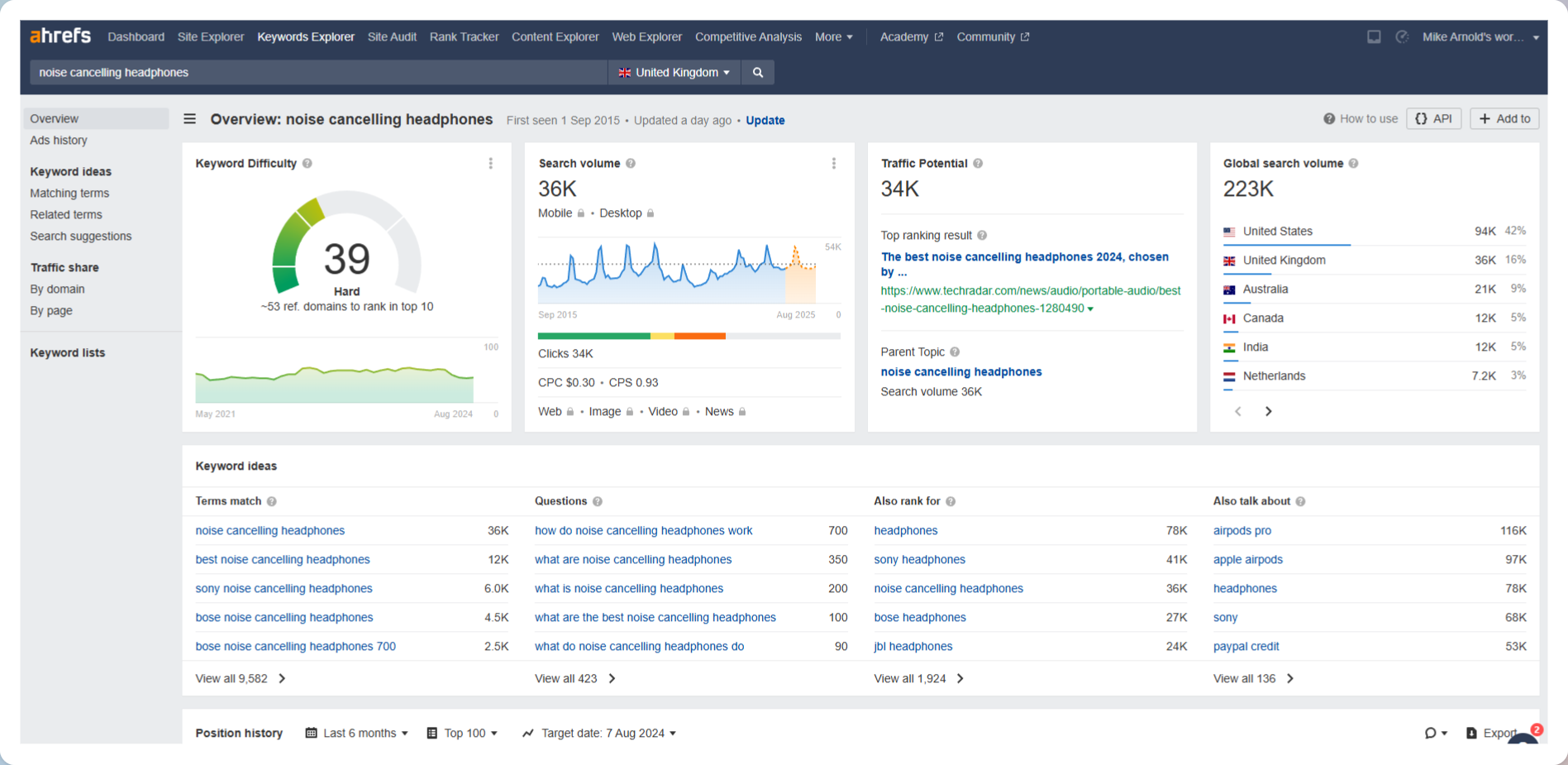
There’s a mixture of questions on the tech, people looking at various brands, and those looking for the best for their budget.
With this in mind, there’s no one piece of content that can effectively cover all of these topics.
You need one piece per topic (or a complete guide that covers all questions, or top brands, or compares certain aspects of a model), per search intent keyword.
Therefore, when you understand the differences between these intents, you can create and curate highly focused and targeted pieces of content and web pages that give your users exactly what they want the exact moment they’re looking for it.
Understanding the nuances of a particular search can help tailor content to meet user expectations.
And that’s how you become the business that Google loves to recommend.
Why your SEO strategy hinges on search intent (seriously)
Okay, so we’ve covered the different types of search intent. Now, let’s talk about why this seemingly simple concept is actually the linchpin of your entire SEO strategy.
Here’s the deal: Google’s #1 priority is to give its users the absolute best, most relevant results for their searches. And that means understanding the intent behind those searches.
Think about it: If someone is searching for “how to make fluffy pancakes,” they don’t want to land on a page trying to sell them a pancake mix. They want a recipe.
Notice below how there are two main recipes, then Snippet recipes, and then more recipes. Google is showcasing as many high-quality options as possible for the user to explore.
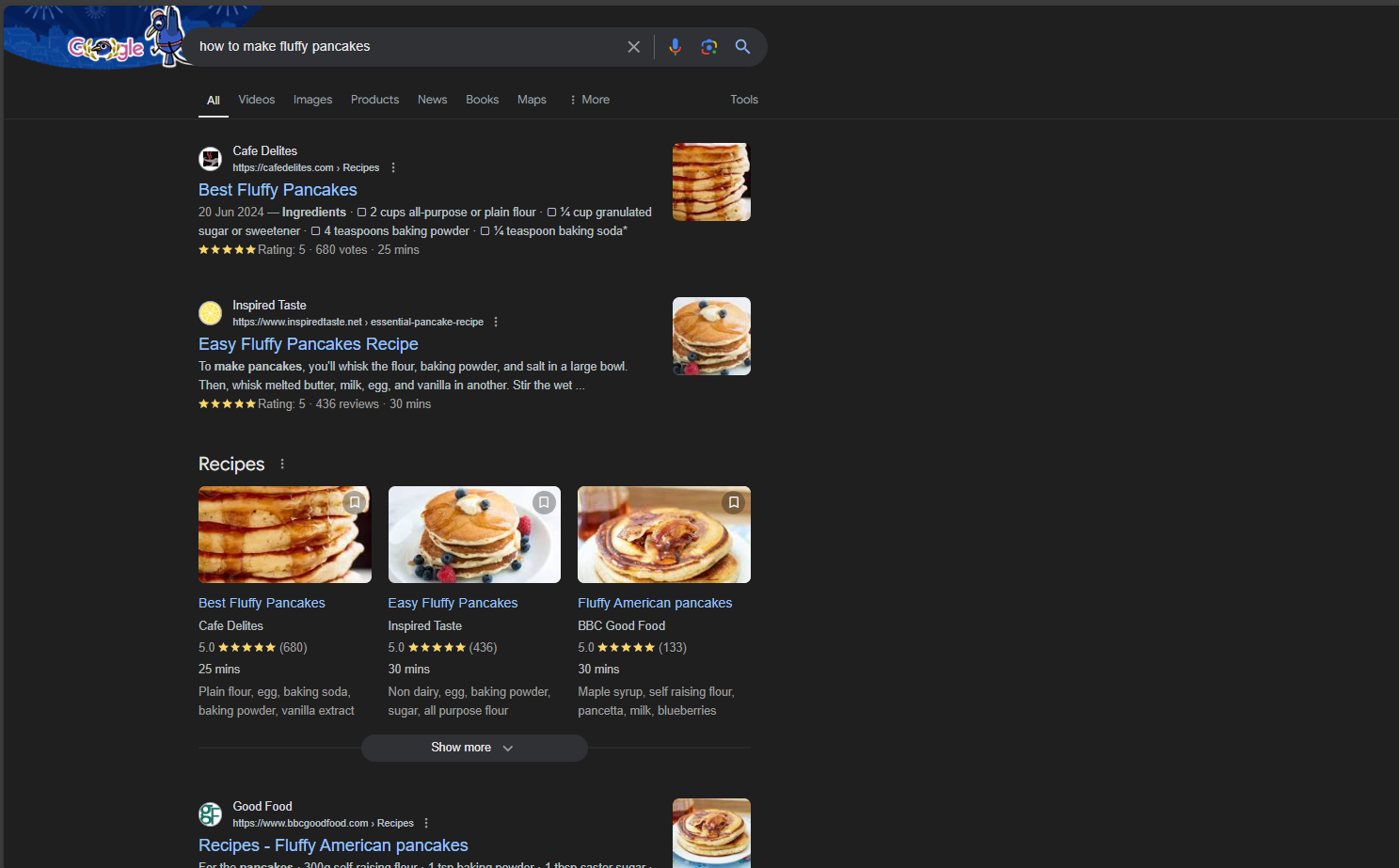
In comparison, if we search “pancake mix”, you’ll see a completely different results page, with tons of shopping options, info boxes, and then some recipes. This is search intent in action, from Google’s point of view.
It’s your job to create content to fit this approach. The better you do that, the better your content will rank.

Google knows that if it keeps sending its users to irrelevant pages, then those users could turn to a different search engine because they’re not getting what they want. Google works so well because it’s so effective at using data to understand a user’s search intent and putting the right content at the top of the page.
There’s a reason only 3% of users go to the second page of Google Search. They get it right first time.
What’s more, Google’s algorithms are constantly getting smarter at figuring out search intent. If your content doesn’t align with what people are actually looking for, you’re going to get left behind.
But here’s the good news: When you do get it right, the rewards are massive. Here’s what you can expect:
- Higher rankings: Google and other search engines will start to see your content as super relevant and bump you up in the search results.
- More organic traffic: More people will click on your links because your content is exactly what they wanted.
- Increased conversions: When people find what they’re looking for, they’re more likely to take the next step, whether buying your product, subscribing to your newsletter, or contacting you for more information.
And it’s not just about the numbers. It’s about creating a better experience for your potential customers. When you give people what they want, they’ll remember you as the business that solved their problem or answered their question.
That builds trust and loyalty, which are priceless for any business.
The bottom line?
Search intent isn’t just a buzzword; it’s the foundation of a successful SEO strategy. Ignore it, and you’ll struggle to get your content seen by the right people. Embrace it, and you’ll open the door to a whole new world of organic traffic and growth.
How to become a search intent detective (and master the art of optimisation)
Alright, let’s get into this.
How do you actually figure out what people are looking for when they type those magical words into Google? There are several steps you need to take to ensure your content hits the bullseye. Let’s break them down.
Step #1: Keyword research
Ah yes, the foundation of your project, and it is with most SEO practices.
First and foremost, keyword research isn’t just about finding popular words and phrases. It’s about understanding the motivation behind those keywords. You could find a keyword with a search volume of thousands of searches, but if it’s not really relevant to your business or what you’re trying to do, your efforts are probably not worth it.
So, instead of just looking at search volume, start asking yourself:
- What problem is this person trying to solve?
- What question are they hoping to answer?
- What are they hoping to achieve by searching this?
Tools like AnswerThePublic, Ahrefs, or AlsoAsked can be incredibly helpful here. They show you the questions people are actually asking around your chosen keywords, giving you valuable insights into their intent.
Additionally, tools like Google Analytics can help in understanding the motivation behind keywords by analysing user behaviour and search patterns. For example, let’s say you own a small bakery specializing in gluten-free treats. This is you.
Instead of focusing solely on the keyword “gluten-free bakery” (which has a high search volume), you could delve deeper into user search intent.
Using tools, you might discover questions like:
- “Where can I find gluten-free birthday cakes near me?”
- “What are the best gluten-free bread recipes?”
- “Are gluten-free desserts healthy?”
With this information, you can determine search intent for different pieces of content.
- Local search: They want to find a nearby bakery for a specific occasion.
- Informational search: They’re seeking recipes or information about gluten-free baking.
- Transactional search: They’re looking to buy gluten-free products online.
- Commercial intent: They’re comparing bakeries in the local area.
By understanding these different intents, you can tailor your content accordingly. You could create a dedicated page for your gluten-free cakes, share blog posts with recipes and information, or optimize your online store for easy navigation and purchase.
Actionable tip: Look at your Google Analytics data. Which pages on your website currently get the most traffic from organic searches? What are the keywords people are using to find those pages? This can give you valuable clues about your audience’s search intent and help you identify new keyword opportunities.
Step #2: SERP analysis
The search engine results page (SERP) is like a crystal ball that reveals what Google thinks is the most relevant content for a particular query.
Take a close look at the top-ranking pages for your target keywords. What type of content do you see?
Are they blog posts, product pages, videos? This will give you clues about what kind of content you need to create to compete.
Notice the difference.
Bakeries near me.
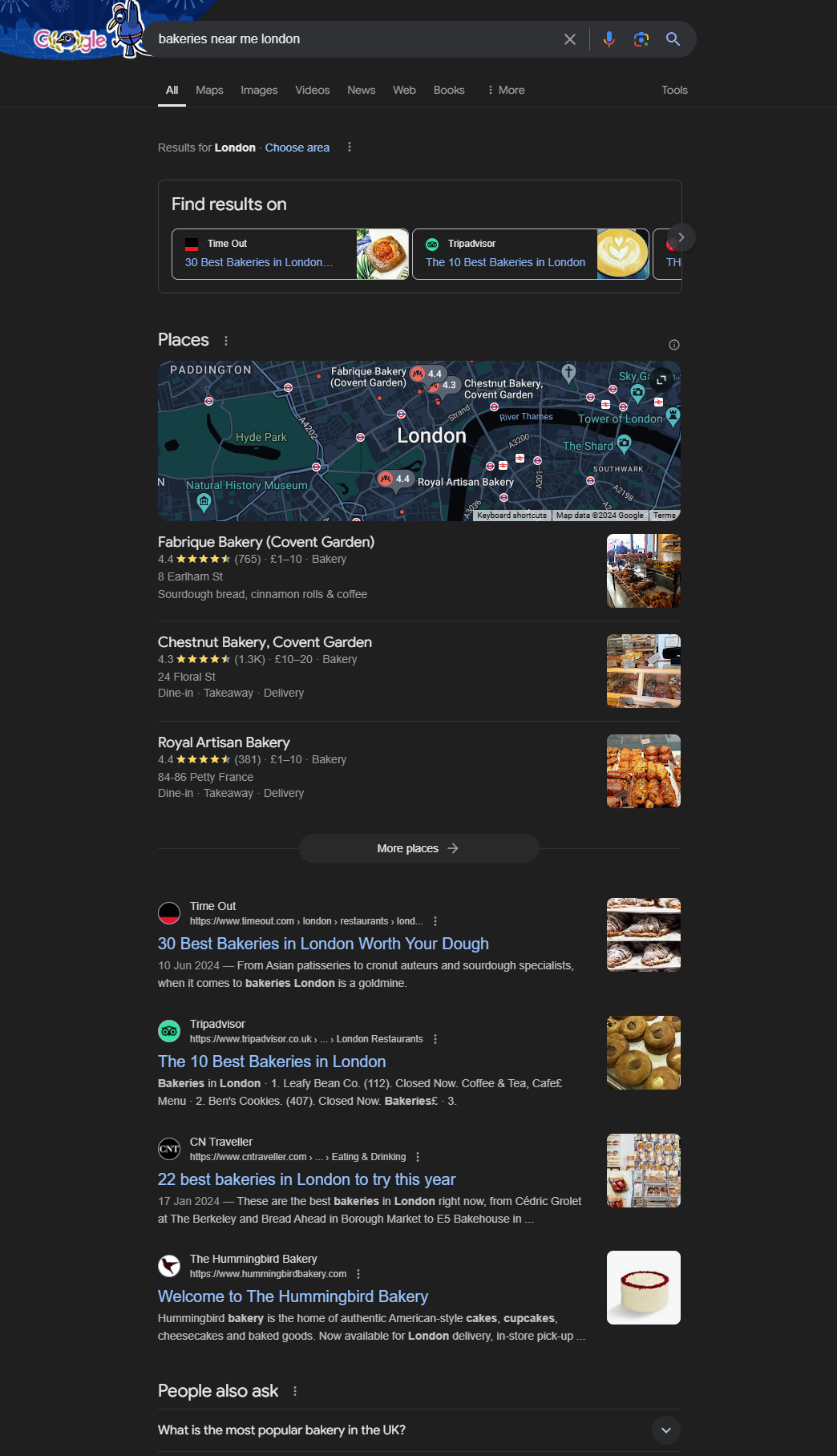
You can see perhaps the most prominent results is the map with the top local bakeries in the London area. This is made possible by businesses who use the formerly titled Google My Business service, now known as a Google Business Profile, so make sure you’re signed up there.
However, and perhaps overlooked, the next top-ranked form of content is blog posts, specifically those that rate and review the top X bakeries in the London area. As a bakery yourself, you could think about uploading posts to compete with these, or avoid the keyword completely.
In comparison, let’s check out the “gluten free bread London” keyword.
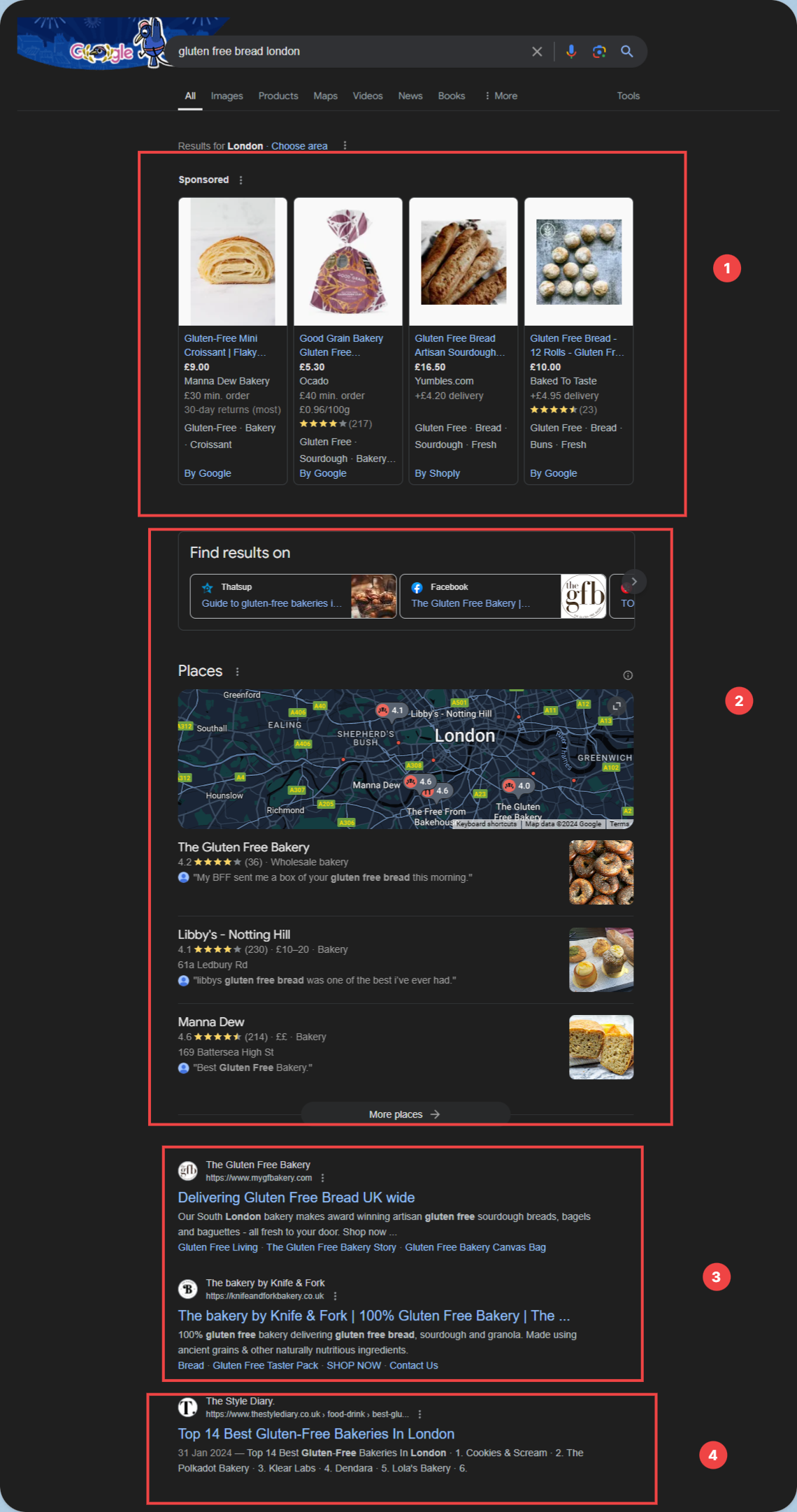
Breaking this search result page down, you’ll find:
- Sponsored products that users can buy straight away online (transactional intent)
- Local businesses that sell the products in the local area, with reviews, based on Google Business Profile data.
- Websites that represent other bakeries in the area that sell the gluten free products.
- Blog content that showcases a comparison (commercial intent) between options in the local area.
Analysing the SERPs in this way can help you identify what kind of intent users have when searching for a specific keyword, and if you’re planning to address said keyword, what sort of content and set up you need.
In these examples, if someone was searching with navigational search intent, then they’d be searching for your business specifically.
Here, users would be far more specific, and the results would likely include the bakery’s website, social media pages, and perhaps reviews or articles about the bakery. To rank properly, you’d be need to ensure all this information is readily available to Google.
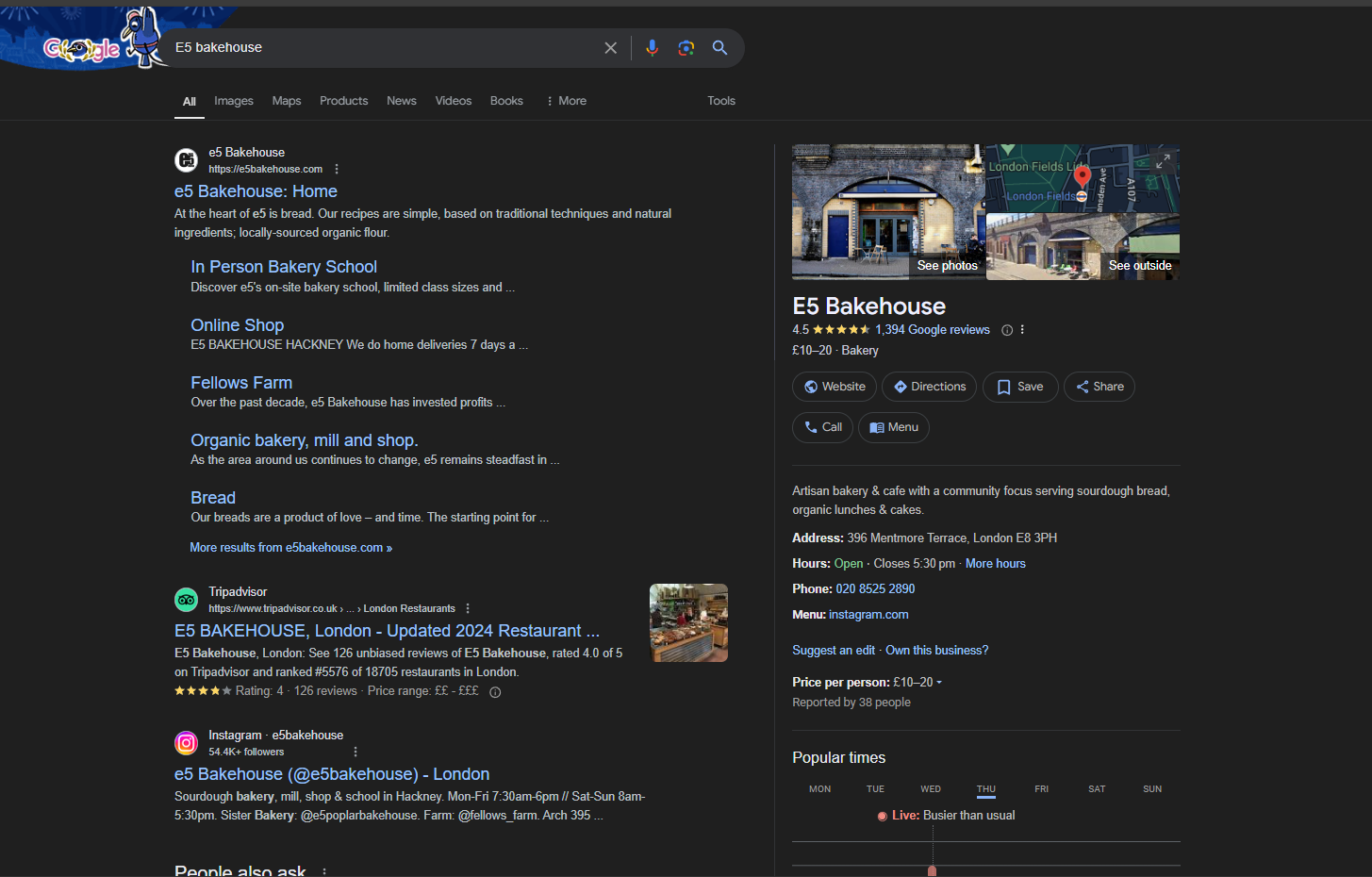
Actionable Tip: When analysing SERPs, pay attention to the featured snippet (if there is one). This is the box of information that appears at the top of the results page. If you can create content that answers the query in a clear and concise way, you might be able to snag that featured snippet and gain even more visibility.
Step #3: Content alignment (Give the people what they want)
This is where the magic happens. Once you understand the search intent, it’s time to make sure your content aligns perfectly with it.
- Content type: If the intent is informational, create a blog post, guide, or tutorial. If it’s transactional, make sure you have a well-optimised product page or landing page. Creating educational content that aligns with informational search intent is crucial to effectively capture user interest and improve SEO rankings.
- Content format: Sometimes text is best, but other times, a video or infographic might be more effective. Think about what would best serve the user’s needs.
Let’s revisit our bakery. You’ve identified three main search intents for “gluten-free bakery”:
- Local search: Create a Google My Business profile with accurate information about your location, hours, and contact details. Make sure your website is mobile-friendly and has a clear map and directions. Consider a dedicated “Find Us” page.
- Informational search: Start a blog with recipes for gluten-free bread, cakes, and other treats. Write informative articles about the benefits of gluten-free diets and tips for gluten-free baking. Create engaging videos showcasing your baking process or highlighting customer testimonials.
- Transactional search: Optimise your online store for easy navigation and secure checkout. Use high-quality images of your products and write detailed descriptions highlighting their unique features and benefits. Offer discounts or promotions to entice potential customers.
Actionable Tip: Don’t limit yourself to one type of content. Experiment with different formats (blog posts, videos, infographics, social media posts) to see what resonates best with your audience. You can also research search intent and repurpose existing content to target different search intents. For example, turn a blog post about gluten-free bread into a video tutorial or an infographic summarizing the key points.
Step #4 – On-page SEO: speak Google’s language
On-page SEO is still incredibly important. But instead of just stuffing keywords into your title tags and meta descriptions, use them to clearly signal the intent of your content.
Tell Google (and your potential customers) precisely what they can expect to find on your page, matching the search intent of your content with your users.
Additionally, optimising content for keywords with commercial intent is crucial to capturing traffic from users considering purchasing a product or service.
In our ongoing example, this could look like:
- Local search: Use location-based keywords in your title tags, meta descriptions, and header tags (e.g., “Best Gluten-Free Bakery in [Your City]”). Include your address and phone number on every page of your website.
- Informational search: Craft clear, descriptive titles that accurately reflect the content of your blog posts or articles (e.g., “The Ultimate Guide to Gluten-Free Baking”). Use relevant keywords throughout your content, but avoid keyword stuffing.
- Transactional search: Write compelling product descriptions that highlight the benefits and features of your gluten-free treats. Use keywords that indicate a buying intent (e.g., “buy,” “order,” “shop”). Make sure your call-to-action buttons are clear and prominent.
Actionable Tip: Don’t forget about your image alt text! This is another opportunity to signal search intent to Google. For example, if you have a picture of a gluten-free chocolate cake, your alt text could be “Delicious gluten-free chocolate cake for sale at [Your Bakery Name].” This not only helps with SEO but also makes your website more accessible to visually impaired users.
Step #5 – User experience: Roll out the red carpet
No matter how well you optimise for search intent, it won’t matter if your website is a nightmare to use. Make sure your content is easy to read, navigate, and share.
A positive user experience is a ranking factor in itself! Additionally, a positive user experience can significantly enhance conversions for users with transactional search intent, as it aligns with their readiness to take action.
Remember, optimizing for search intent is an ongoing process. Google’s algorithms are constantly evolving, and so are your customers’ needs.
Stay curious, fulfil search intent, keep testing, and most importantly, keep your focus on delivering the best possible experience for your audience.
Level Up Your SEO: Advanced Keyword Search Intent Strategies
Okay, now you’ve got the basics down, let’s explore some ninja-level strategies that can take your search intent optimization to the next level:
Targeting informational queries is crucial for enhancing visibility and engagement, as these search queries often involve users seeking to learn about a specific topic, typically phrased as questions.
Keyword intent clustering: The art of content domination
Instead of creating one piece of content for each keyword, try grouping keywords with similar intent together. This allows you to create comprehensive content hubs that cover all aspects of a topic.
For example, if you’re selling coffee makers, you might create a content hub around “how to make the perfect cup of coffee.” You could include articles on different brewing methods, coffee bean varieties, grinder recommendations, and more.
This not only gives you more opportunities to rank for different keywords, but it also positions you as the go-to expert on all things coffee.
Featured snippets: The holy grail of informational intent
Ever noticed those little boxes that sometimes appear at the top of the search results? Those are featured snippets, and they’re like prime real estate in the world of SEO.
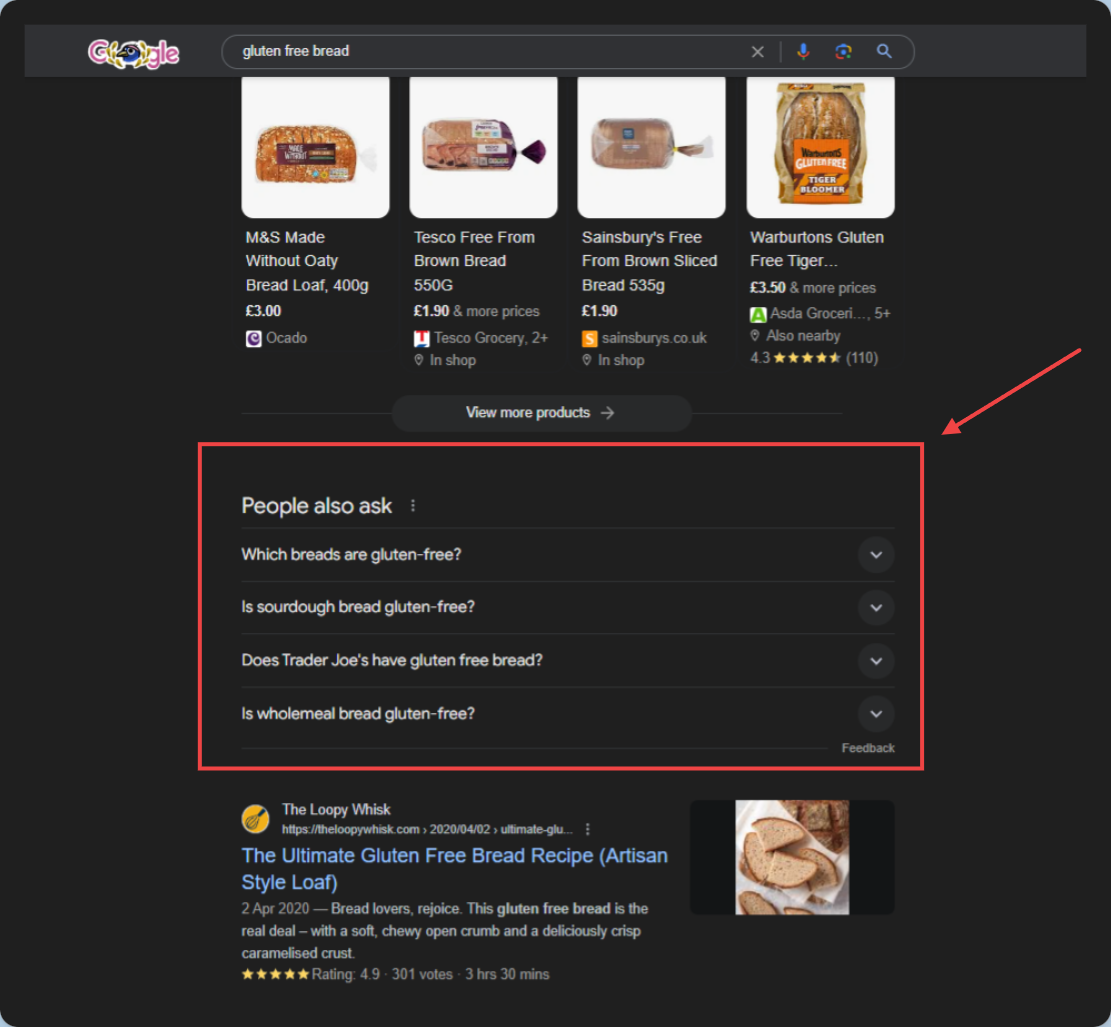
To snag a featured snippet, you need to tailor your content to answer specific questions concisely and accurately. This is where understanding search intent is crucial because you need to know exactly what question the user is asking to craft the perfect answer.
Local and navigational intent: Think global, act local
If you have a physical location or serve specific geographical areas, local search intent is your best friend. People searching for “best pizza near me” or “electricians in London” are looking for businesses in their vicinity.
Make sure your website and Google Business Profile listing are optimised for local keywords and phrases so you show up when people are searching in your area.
These advanced engagement and marketing strategies may require a bit more effort, but the payoff can be huge. By mastering the art of search intent optimisation, you can turn your website into a traffic-generating machine that attracts the right kind of customers and drives real results for your business.
Remember, the key is to always put yourself in the shoes of your potential customers. What are they trying to achieve? What information do they need? How can you help them?
By focusing on their needs and delivering the most relevant, helpful content, you’ll win their hearts, minds, and, most importantly, their business.
Don’t fall into these search intent traps! (Common mistakes to avoid)
Even with the best intentions, it’s easy to stumble when it comes to matching audience intent. So, let’s shine a light on some of the most common pitfalls:
- Keyword bbsession: Don’t get so fixated on specific keywords that you forget about the bigger picture—the intent behind them. Remember, it’s not about stuffing keywords into your content; it’s about understanding what people want and giving it to them.
- Ignoring the SERP: Don’t skip the crucial step of analysing the search engine results page (SERP). It’s your roadmap to understanding what Google considers relevant for a given query.
- One-size-fits-all content: Not all content is created equal. A product page won’t rank for an informational query, and vice versa. Tailor your content to the specific intent you’re targeting.
- Neglecting user experience: Your website could be a goldmine of valuable content, but if it’s slow, clunky, or hard to navigate, people will bounce faster than you can say “search intent.”
Recognising different types of user intent—such as transactional, navigational, and commercial search intent—can inform the optimization of your content to better align with the expectations and needs of your audience, ultimately enhancing your SEO strategies.
Avoiding these common mistakes can save you a lot of time, effort, and frustration. Remember, search intent is about putting your audience first and delivering the right content at the right time.
Wrapping It Up
There you have it! We’ve covered a lot of ground in this guide, but hopefully, you now have a crystal-clear understanding of what search intent is, why it’s so crucial for your SEO success, and how to optimize for it like a pro.
Remember, search intent is like your SEO compass. It guides you towards the right kind of content, helps you understand your audience better, and ultimately leads to more organic traffic, higher rankings, and a healthier bottom line.
Don’t let your SEO efforts be a shot in the dark. Embrace the power of search intent and watch your website transform into a magnet for the right kind of customers.
Your Next Steps:
- Audit your existing content: Take a look at your most important pages and ask yourself, “Does this content truly align with the intent of the people searching for it?”
- Revamp your keyword research: Don’t just focus on search volume; dig deeper to understand the intent behind those keywords.
- Create content that converts: Tailor your content to the specific needs and goals of your target audience.
- Track your results: Keep an eye on your organic traffic, rankings, and conversions to see the impact of your search intent optimization efforts.
And if you need any help along the way, get in touch with the team here at LOCALiQ. As marketing experts, we’ve kept up and succeeded with the trends for years, and can help businesses like you get positive results from the word go.
Contact us today to get started.

